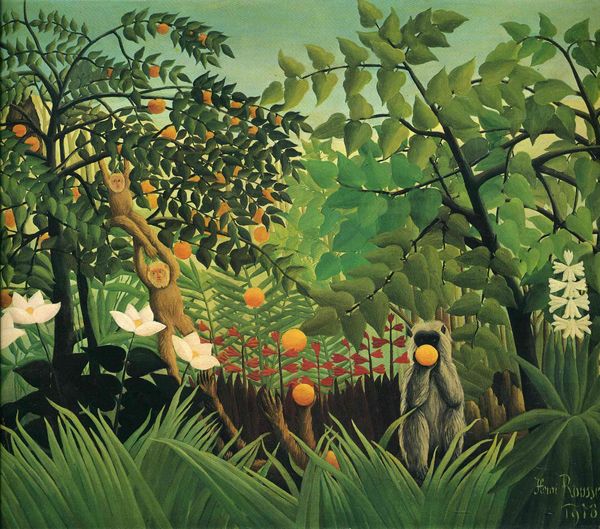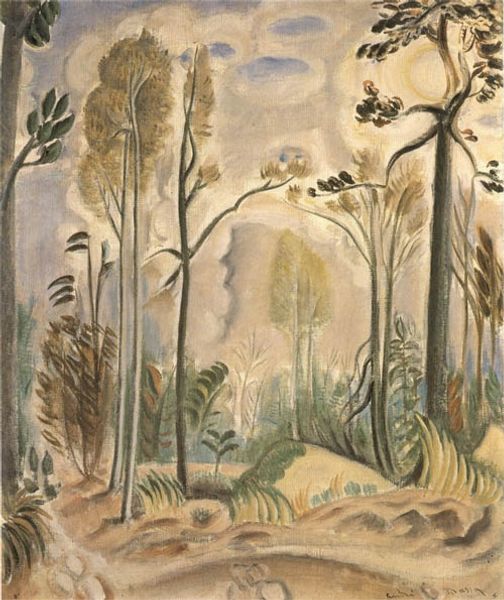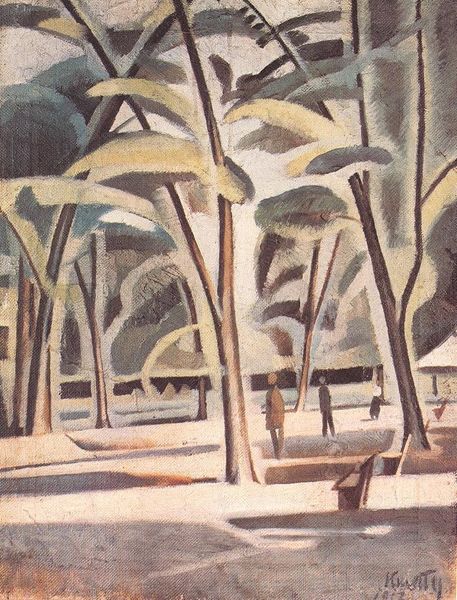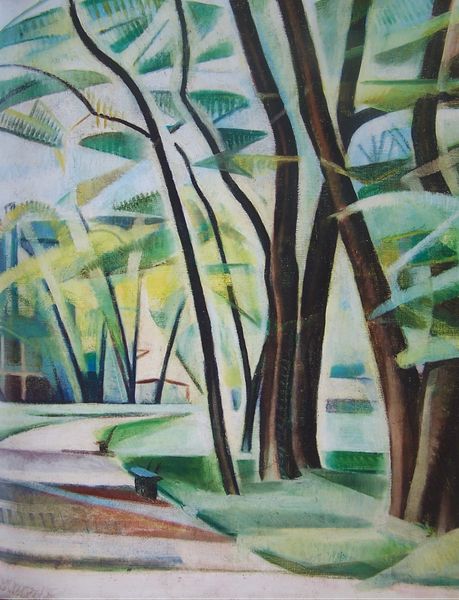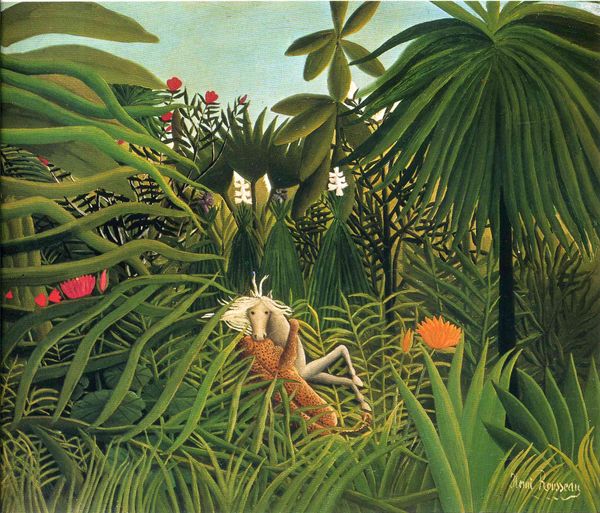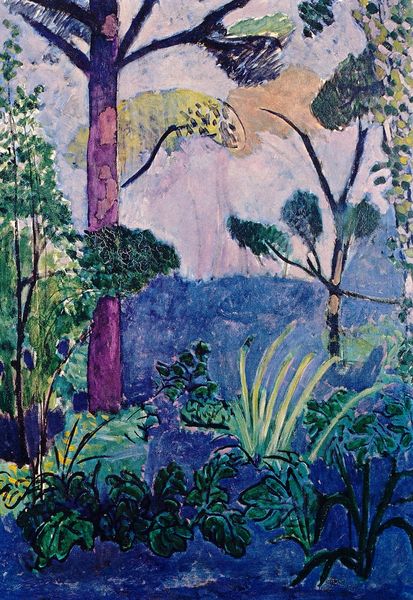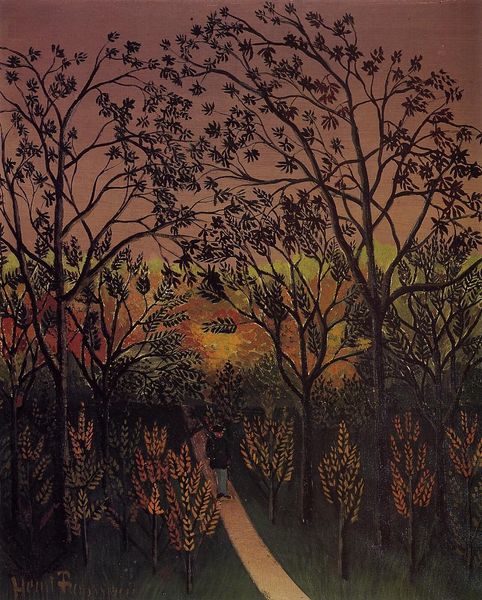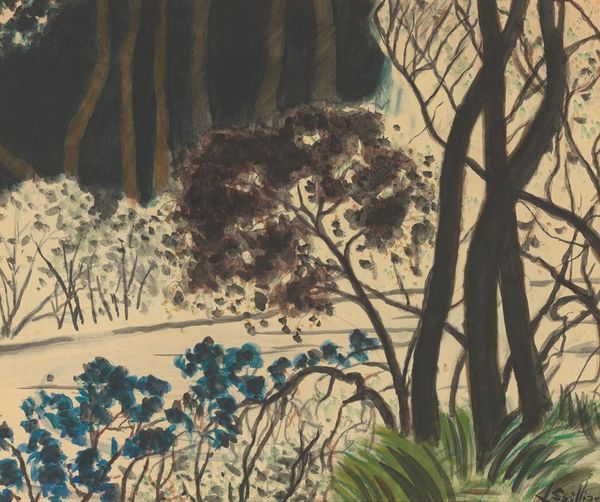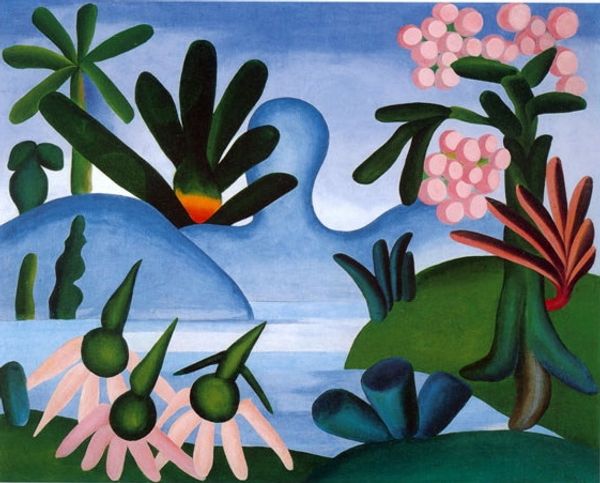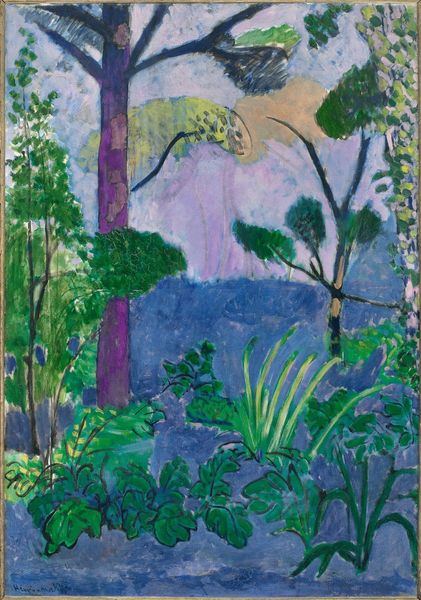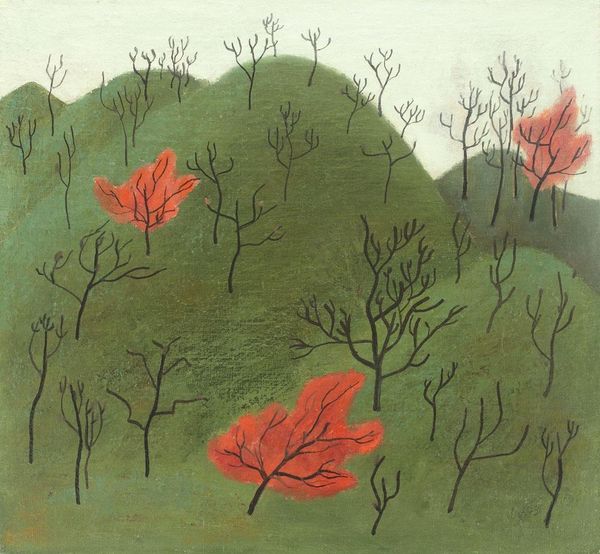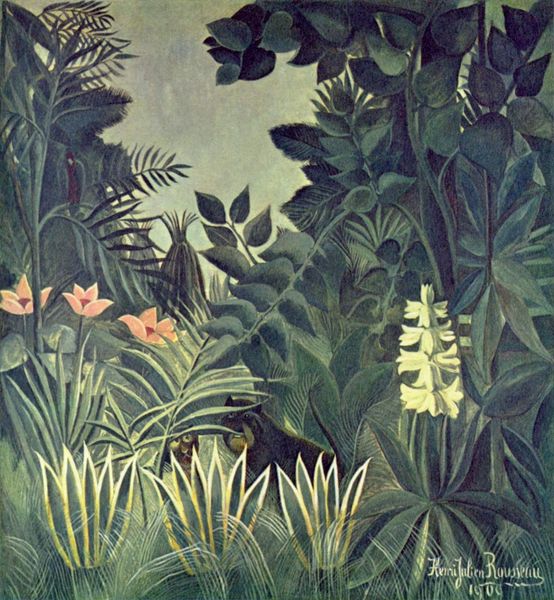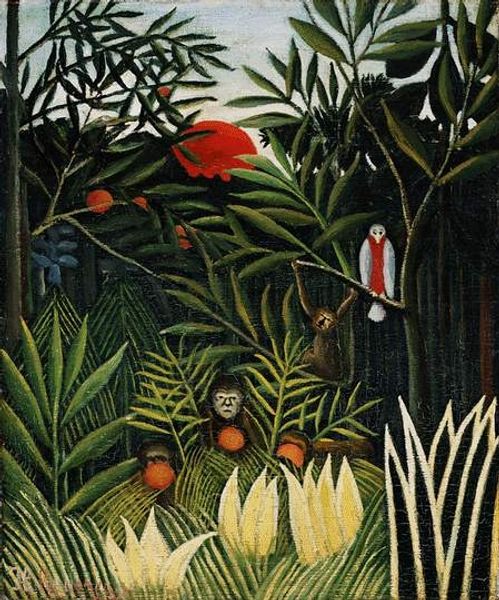
Copyright: Public domain
Editor: This is Henri Rousseau's "The Waterfall" from 1910, done with oil paints. I find the composition a bit unsettling. The figures feel placed, almost like cutouts, within the intensely lush landscape. What’s your take? Curator: It’s easy to see it simply as a naive fantasy, but I think it challenges our notions of "authenticity" in representing the non-Western world. Rousseau never left France, so his jungles were born from Parisian gardens, books, and the colonial imaginary of the era. How do we reconcile that with the Black figure present in the landscape? Editor: So, it's not just a pretty picture of nature, but a representation of colonialism, too? The figure is so small, almost hidden, I hadn't really considered that. Curator: Exactly. His landscapes tap into the exoticism that was popular at the time, fueled by colonial narratives and a longing for the "primitive." The Black figure becomes part of that landscape, almost another element of the exotic fauna. How does it feel to be put on display as a representation of otherness, like one of the jungle's animals? Editor: I see what you mean. The waterfalls and vibrant plants initially gave a feeling of serenity, but with that context it feels more charged. The Black figure is another item within this display, it feels objectifying. Curator: Precisely! By examining his source material and the cultural context of his time, we begin to decode its underlying themes about power, representation, and the exotic. Considering who is behind the artistic representation and who is included and how it reifies narratives of social injustice, this artwork has become much more insightful, don’t you agree? Editor: I do! Thanks for expanding my thinking! It is also necessary to know about how and where did the artist develop this. It’s not enough to see beauty or naivete; the historical context and colonial legacy woven into it are key.
Comments
No comments
Be the first to comment and join the conversation on the ultimate creative platform.

